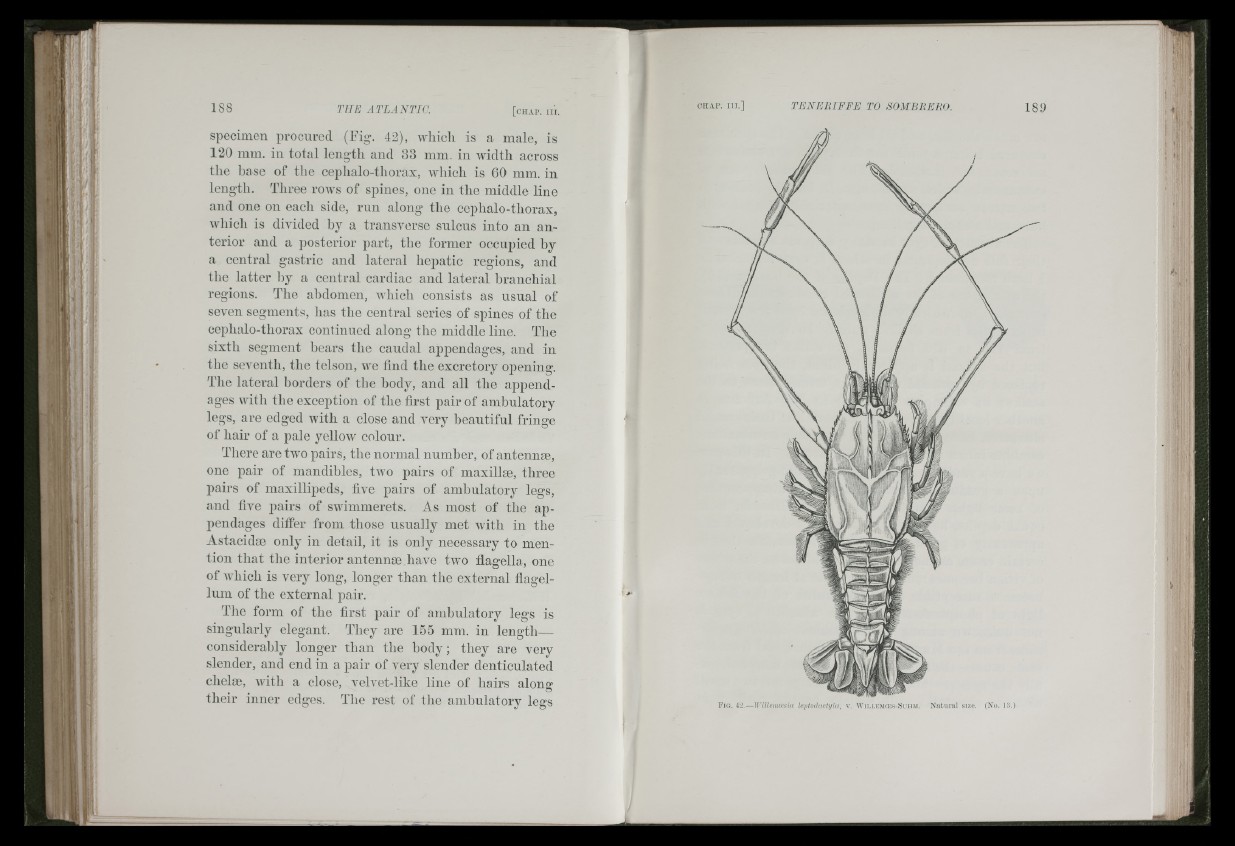
■■I "j“
i' ¥ Î i
specimen procured (Fig. 42), Avliicii is a male, is
120 mm. iu total length aud 33 mm. iu width across
the base of the cephalo-thorax, which is GO mm. in
length. Three roAvs of spines, one in the middle line
aud one ou each side, run along the cephalo-thorax,
Avhich is diA'ided by a transA'crse sulcus into an anterior
and a posterior part, the former occupied by
a central gastric and lateral hepatic regions, and
the latter l)y a central cardiac and lateral branchial
regions. The al)domen, AAdiich consists as usual of
seven segments, has the central series of spines of the
cephalo-thorax continued along the middle line. The
sixth segment bears the caudal appendages, and iu
tbe seventh, the telson, aa'c find the excretory opening.
Tbe lateral borders of tbe body, and all tbe appendages
AA'ith the exception of the first pair of ambulatory
legs, are edged Avith a close and very beautiful fringe
of hair of a pale yelloAv colour.
There are tAvo pairs, the normal number, of antenuæ,
one pair of mandibles, two pairs of maxillæ, three
pairs of maxillipeds, five pairs of ambulatory legs,
aud five pairs of swimmerets. As most of the appendages
differ from those usually met Avith in the
Astacidæ only in detail, it is only necessary to mention
that the interior antenuæ have two flagella, one
of AAdncli is very long, longer than the external flagel-
lum of the external pair.
Tlie form of the first pair of ambulatory legs is
singularly elegant. They are 155 mm. in length—
considerably longer than the body; they are very
slender, and end in a pair of very slender denticulated
chelæ, AA'ith a close, velvet-like line of hairs along
their inner edges. The rest of the aiuhiilatory legs
189
Fig. 42.—tVUlemcnsia. leptodactyla, v. W i l l e m oe s - S u h m . Natural size. (No. 13.)